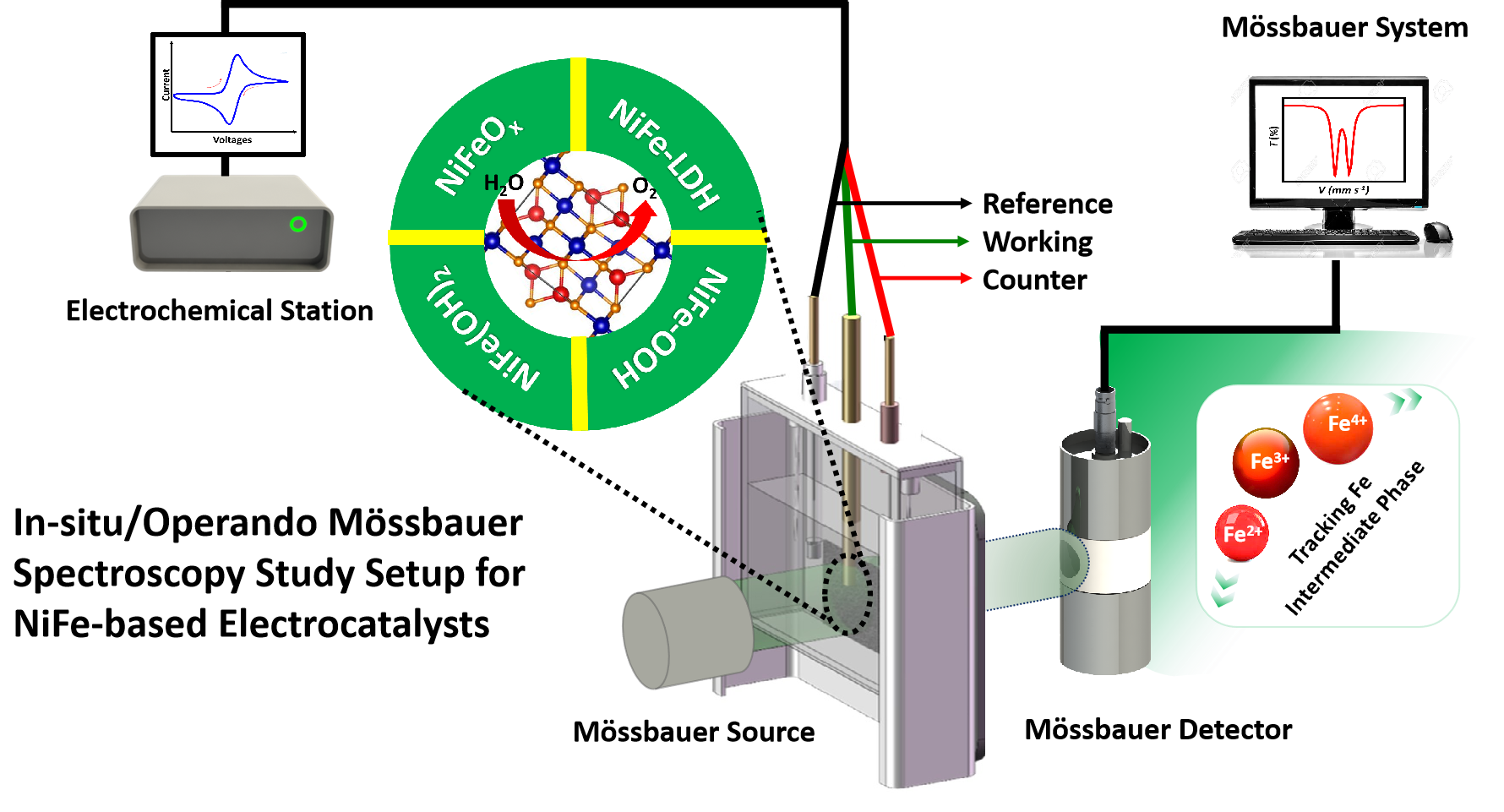Recently, we published a tutorial review "in-situ/operando 57Fe Mössbauer spectroscopic technique and its applications in NiFe-based electrocatalysts for oxygen evolution reaction" in Journal of Electrochemistry.
The Mössbauer spectroscopy plays important role in study of Fe/Sn based non-noble metal electrocatalysts. Mössbauer spectroscopy with high energy resolution can be applied to identify catalyst phases structure, active sites, catalytic mechanisms, and determining relationship between catalytic activity and coordination structure. The in-situ/operando Mössbauer spectroscopy is a technique based on hyperfine interactions between nucleus and electrons, gives the parameters of isomer shift, quadrupole splitting and magnetic hyperfine field to study oxidation state, electron spin configuration, symmetry, and magnetic information of Fe/Sn sites in catalyst under working conditions.
In this paper, the newly developed in-situ/operando Mössbauer spectroscopy for electrochemistry is introduced in detail, including basic theory, instrument, in-situ/operando device, spectrum measurement and fitting by using a study case of Ni-Fe oxyhydroxide based water oxidation catalyst.

A schematic illustration of In-situ/operando 57Fe Mössbauer spectroscopic electrochemical setup for the study of OER
This work was supported by the National Natural Science Foundation of China, and the International Partnership Program of CAS.(Text & image by GE Rile、ZHOU Wenhui)
Link:http://electrochem.xmu.edu.cn/EN/10.13208/j.electrochem.210854